This picture shows the two different tails of a comet - the dust tail and the ion tail.
Click on image for full size
JPL
The Comet Tail
A comet generally has two tails, not one. Some pictures accurately show this phenomena. One tail is due to the comet's dust particles, the other is due to ionized gas from the comet
coma.
Dust particles form the first tail. The only force which affects these small particles in space is corpuscular radiation from the Sun itself. This radiation pushes the tiny dust particles in the direction from which they came, the way wind can blow rain droplets at an angle. Cometary dust particles can be thought of as billowing up from the comet's surface. Thus, this comet tail generally points back along the comet trajectory.
Ions (electrically charged particles), which first come from the nucleus as (neutral) gaseous particles, are swept into the second comet tail by interaction with the Interplanetary Magnetic Field (IMF). The IMF, or magnetic field of the sun, which is present everywhere in interplanetary space, sweeps past the comet nucleus and carries the ions with it to form the tail. Because of this special interaction with the IMF, this tail always points directly away from the Sun.
You might also be interested in:
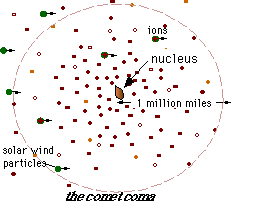
As the ices of the comet nucleus evaporate, they expand rapidly into a large cloud around the central part of the comet. This cloud, called the coma, is the atmosphere of the comet and can extend for millions
...more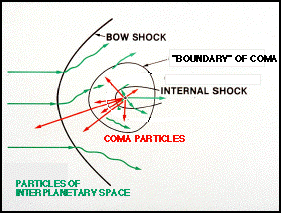
When evaporation begins, the gas is propelled from the nucleus at supersonic speed (depicted by arrows in the figure). Because of the low gravity in space, this means that the molecules from the nucleus
...more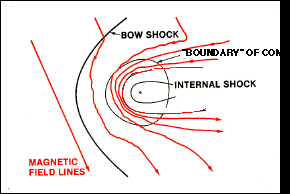
The magnetic field of the sun (the IMF) is distorted in passing over the comet, taking a long time to slip around the sizeable ion cloud which forms the comet coma. The stretched magnetic field lines form
...more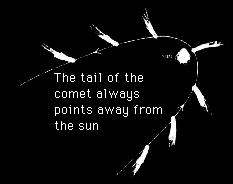
Comets are disturbed from their orbits in the Oort Cloud and begin a passage into the solar system, spinning and tumbling as they come. The trajectory which they acquire can be hyperbolic, parabolic, or
...more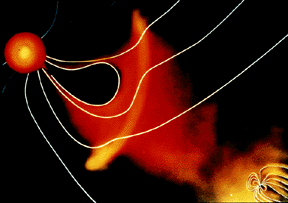
The Sun is surrounded by a "bubble" in space called the heliosphere. In a sense, we Earthlings live within the outer atmosphere of our Sun. The solar wind fills the heliosphere with energetic
...more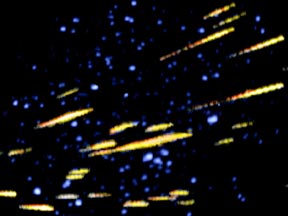
A meteor shower is an astronomical event during which many meteors can be seen in a short period of time. Most meteor showers have a peak activity period that lasts between several hours and a couple of
...more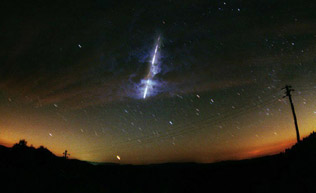
Meteors are streaks of light, usually lasting just a few seconds, which people occasionally see in the night sky. They are sometimes called "shooting stars" or "falling stars", though they are not stars
...more















